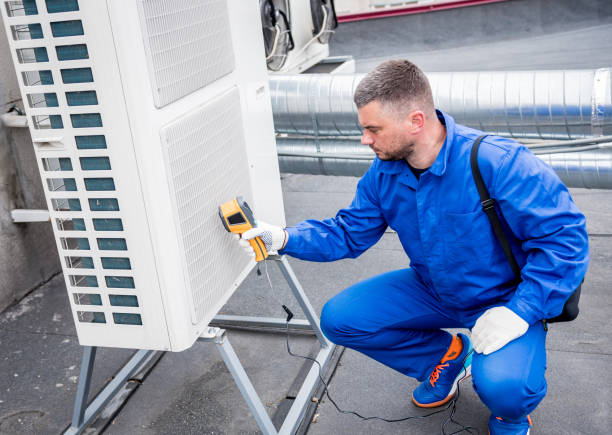Ductless heating and air conditioning systems, also known as mini-split systems, are increasingly popular for their energy efficiency, ease of installation, and flexibility. Unlike traditional HVAC systems, ductless units don’t require extensive ductwork, making them ideal for homes without pre-existing ducts or for areas where central heating and cooling might be impractical. However, like any HVAC system, ductless systems require regular maintenance to ensure optimal performance, longevity, and air quality.
In this article, we’ll explore how to properly maintain your ductless heating and air conditioning system, including routine cleaning, key components to focus on, and the importance of professional servicing.
What Is a Ductless Heating and AC System?
Before diving into maintenance tips, it’s essential to understand what a ductless heating and air conditioning system is. These systems consist of two primary components: an indoor air-handling unit and an outdoor compressor/condenser unit. The indoor unit is mounted on the wall or ceiling and delivers cooled or heated air directly into a specific room or zone. The outdoor unit is typically placed on a concrete pad or mounted on an exterior wall.
Ductless systems use refrigerant lines to transfer heat between the indoor and outdoor units. The lack of ducts makes these systems highly efficient, as no energy is lost through leaky or poorly insulated ducts, a common issue with traditional HVAC systems.
Why Is Maintenance Important?
Regular maintenance of your ductless system is crucial for several reasons:
- Energy Efficiency: Well-maintained units run more efficiently, which helps reduce your energy bills. Dirt, debris, and clogged filters can cause the system to work harder, increasing energy consumption.
- Prolonged Lifespan: Just like any mechanical equipment, your ductless system will last longer with proper care. Regular maintenance helps prevent costly breakdowns and ensures the system remains functional for many years.
- Improved Air Quality: Since ductless systems blow air directly into your home, a clean system means cleaner air. Dust, mold, and other contaminants can accumulate in the filters and components if not regularly cleaned, degrading the air quality.
- Optimal Performance: Regular maintenance ensures your system provides the correct level of heating or cooling. Neglecting upkeep can lead to inconsistent temperatures and reduced comfort.
- Prevent Expensive Repairs: Regularly inspecting and servicing your ductless system can help catch small issues before they become larger, more expensive problems.
Now that we understand the importance of maintenance, let’s dive into the steps you can take to keep your ductless heating and AC system in top shape.
Routine Maintenance Tasks
1. Clean or Replace Air Filters
The air filters in your ductless system are responsible for trapping dust, pollen, pet dander, and other airborne particles. Over time, these filters can become clogged, reducing airflow and causing the system to work harder. Regularly cleaning or replacing the air filters is one of the most important maintenance tasks you can perform.
- How often to clean? Generally, it’s recommended to clean your filters every 1-3 months, depending on usage. If you have pets, allergies, or live in a dusty environment, you may need to clean them more frequently.
- How to clean? Most ductless systems have washable filters that can be easily removed. Simply wash them with mild soap and water, allow them to dry completely, and then reinstall them. If your system uses disposable filters, make sure to replace them according to the manufacturer’s guidelines.
Regularly cleaning your filters not only improves indoor air quality but also keeps your system running efficiently.
2. Keep the Outdoor Unit Clean and Free from Obstructions
The outdoor unit of your ductless system plays a crucial role in heat exchange, so keeping it clean and free from debris is essential for optimal performance. Dirt, leaves, and other debris can accumulate on the unit’s coils and obstruct airflow, which reduces efficiency and can cause the system to overheat.
- How to clean the outdoor unit? First, turn off the power to the unit. Then, use a hose with gentle water pressure to clean the exterior of the unit, removing dirt and debris. Be careful not to damage the fins or other sensitive components. Trim any nearby vegetation, such as bushes or trees, to ensure the unit has at least two feet of clearance on all sides for proper airflow.
3. Inspect and Clean the Indoor Unit
The indoor air-handling unit can also accumulate dust and debris, which can impact performance and air quality. Regularly inspecting and cleaning the indoor unit will help ensure your ductless system operates efficiently.
4. Check the Refrigerant Lines
The refrigerant lines connect the indoor and outdoor units and are critical for transferring heat. Over time, these lines can develop leaks or become damaged, which can lead to a loss of refrigerant and reduced system efficiency.
- How to inspect the lines? Visually inspect the refrigerant lines for any signs of wear, damage, or leakage. These lines are typically insulated, so check for cracks or fraying in the insulation. If you notice any issues, contact a professional HVAC technician to repair or replace the lines.
5. Ensure Proper Drainage
Your ductless system produces moisture as part of the heating and cooling process, and this moisture needs to be properly drained to prevent water damage or mold growth. Most ductless systems have a condensate drain line that removes excess moisture from the system.
6. Monitor System Performance
Pay attention to how your ductless system is performing. If you notice any unusual sounds, odors, or reduced airflow, it could be a sign that the system needs attention. Early detection of issues can prevent costly repairs and keep your system running smoothly.
The Importance of Professional Maintenance
While many maintenance tasks can be handled by homeowners, it’s important to schedule professional maintenance at least once a year. HVAC technicians have the training and tools to perform a more thorough inspection and cleaning, ensuring that your system is running efficiently and identifying any potential problems before they become serious.
During a professional maintenance visit, the technician will:
- Check refrigerant levels: Low refrigerant levels can reduce efficiency and cause damage to the compressor.
- Inspect electrical components: Faulty wiring or electrical connections can pose a safety hazard and reduce system performance.
- Clean the evaporator and condenser coils: Dirty coils can reduce heat transfer and strain the system.
- Check for refrigerant leaks: Leaks not only reduce performance but can also harm the environment.
- Inspect fan motors and belts: Worn or damaged components can lead to system failure.
Professional maintenance helps extend the life of your ductless system and ensures it continues to operate efficiently.
Benefits of Regular Maintenance
Regular maintenance of your ductless heating and air conditioning system provides several long-term benefits, including:
- Improved energy efficiency: A well-maintained system consumes less energy, leading to lower utility bills.
- Longer system lifespan: Regular care helps prevent wear and tear, ensuring that your system lasts for many years.
Conclusion
Maintaining your ductless heating and air conditioning system is essential for ensuring optimal performance, energy efficiency, and indoor air quality. By regularly cleaning air filters, inspecting refrigerant lines, and keeping both the indoor and outdoor units free of debris, you can extend the lifespan of your system and enjoy consistent comfort in your home. While many tasks can be performed by homeowners, it’s important to schedule professional maintenance annually to address more complex issues and ensure the system continues to operate at peak efficiency.
With proper care and regular maintenance, your ductless system will provide reliable heating and cooling for many years to come, offering a comfortable and healthy indoor environment.



